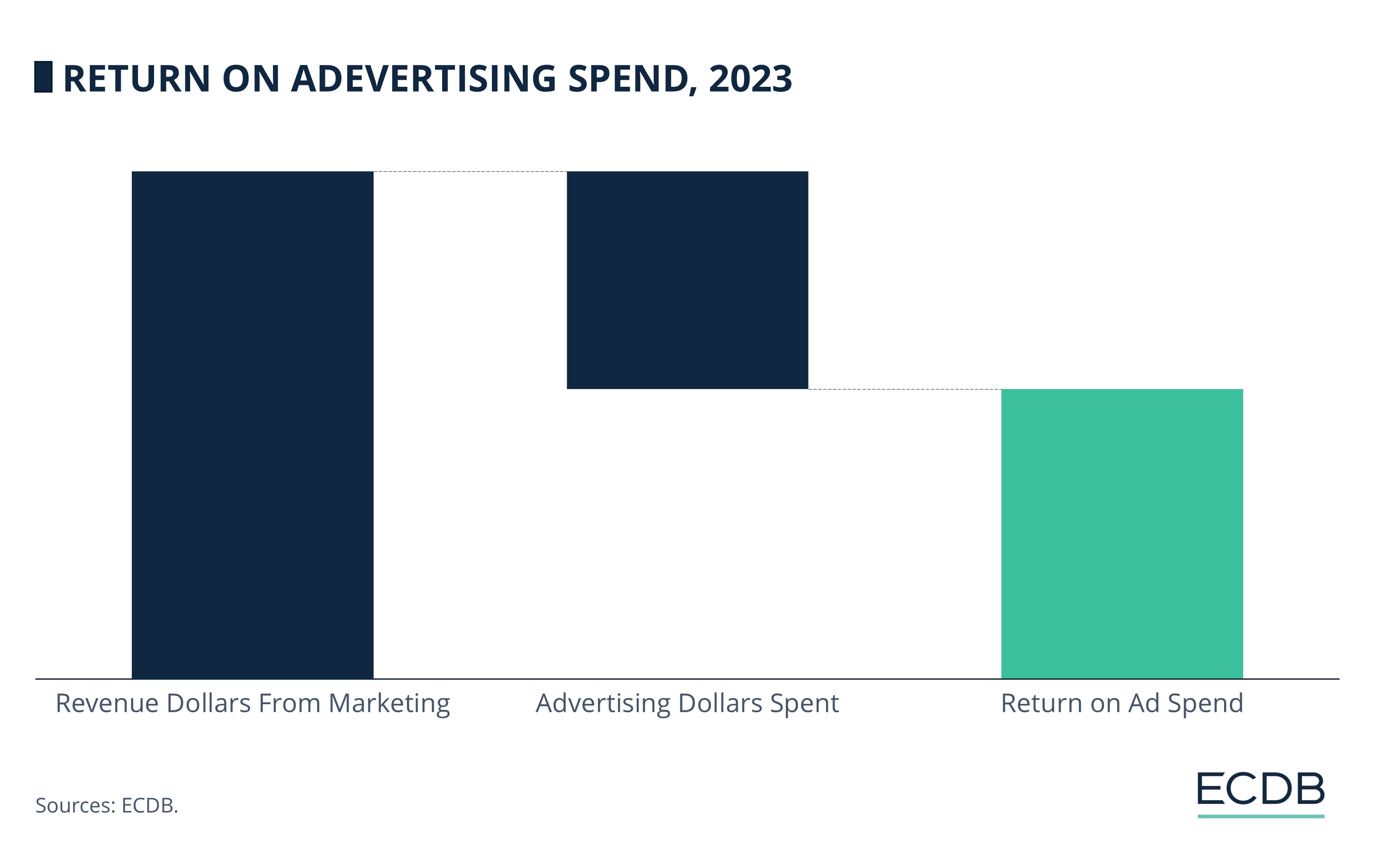eCommerce Metrics
What is ROAS Meaning and How to Calculate it for Better Ad Spend
What does the acronym ROAS stand for? How is this key performance indicator important for advertising campaign in marketing? ECDB has the answers.
Article by Antonia Tönnies | October 29, 2024Download
Coming soon
Share

What is ROAS: Key Insights
ROAS Definition: ROAS (Return on Ad Spend) measures the revenue generated per dollar spent on advertising.
Return on Advertising Spend Calculation: ROAS is calculated by dividing the revenue from ads by the cost of the ads.
ROAS vs. ROI: While both ROAS and ROI measure profitability, ROAS focuses specifically on ad spend, whereas ROI applies to broader investments.
Doing eCommerce is not easy. To be successful, a product requires a solid ad campaign – not because the product is flawed, but because capturing people's attention is essential. Some might say creating an attention-grabbing ad campaign isn’t too difficult, but that’s only half true. A good ad campaign implies a strong ROAS, yet not everyone understands what that means.
Return on ad spend (ROAS) is a metric that measures the amount of revenue generated per dollar spent on advertising.
The goal of tracking ROAS is to determine the cost-effectiveness of an advertising campaign's performance. ROAS can also be used to evaluate whether enough revenue is being generated to continue a marketing campaign. But how is ROAS calculated?
What is ROAS?
ROAS stands for “return on ad spend” and is a marketing metric that estimates the amount of revenue earned per dollar allocated to advertising. It’s a measure of the effectiveness of advertising efforts, with higher ROAS indicating better performance.
Get the latest rankings to see which companies and products are leading in sales. Stay ahead of your competition by joining ECDB: Click here!
ROAS can be measured at various levels within a Google Ads account, including account, campaign, and ad group levels. Furthermore, the return on ad spend metric can be used to evaluate the performance of different ad platforms and channels, as well as to optimize your ad campaign and improve its performance.
Calculating ROAS Measures
To measure ROAS, the revenue generated by advertising must be divided by the cost of that advertising. In other words, ROAS is the ratio of the revenue generated by the ads to the cost of running them.
Calculating return on ad spend for specific ad campaigns or targeting can provide a more complete picture of profitability. Thereby, the marketing strategy can be summarized in a calculation - the ROAS formula:
ROAS = Revenue from Ads / Cost of Ads

Ad dollars spent sums all advertising costs for an ad campaign.
Revenue dollars from marketing resume the total income from an ad campaign.
As an example, a company invests US$100 billion in an ad campaign and generates US$500 in revenue. Translated into the formula, it looks like the following:
ROAS = US$500 / US$100 = 5
In this case, for every US$1 invested in advertising, the company generates US$5. Thus, the result can be interpreted as a 5:1 ratio. It is possible to track actual ad spend or include additional costs like marketing expenses.
How to Optimize Your Ad Spend for Better ROAS?
ROAS is a highly important metric for determining whether a campaign has been successful. But how can a campaign be modified to optimize the return on ad spend? Besides setting clear goals and being open to experimental campaign strategies, there are several techniques that focus on different areas:
Set ROAS as the primary campaign goal for algorithm optimization: When optimizing target ROAS, avoid overly restrictive campaign setups that limit the algorithm's freedom in terms of targeting, placement, etc.
Avoid restrictive targeting: Naturally, one knows one's customers best. But often algorithms see patterns a human would never think of. Trust the algorithm to find the people who are ready to buy.
Keep optimizing constantly: Unfortunately, it is still necessary to constantly monitor campaigns and exclude underperforming ads, keywords, geographies, days of the week, and so on.
Fine-tune ad content for relevant traffic: In performance marketing, it is often pay-per-click, and high spending will drag down the ROAS. Therefore, tailor advertising messages to ensure that only interested customers click on the ad. Optimize for traffic quality, not quantity!
These four tips only represent a fraction of what is possible. ROAS can also be optimized by working on landing pages and the conversion funnel with methods such as A/B testing. But keep in mind that the optimization tips may be more or less effective depending on the case at hand.
ROAS vs. ROI: What is the Difference?
ROAS is practically identical to the return on investment (ROI) metric, but specific to the context of analyzing advertising spend. Both marketing metrics measure profitability by viewing costs against revenue.
Nevertheless, ROI is a broader metric that can be applied to various investments, evaluating overall profitability, while ROAS is specific to marketing teams as it focuses on the profit margins of an advertising campaign. The general formula for return on investment looks like this:
ROI = (Net Profit / Total Investment) * 100
For instance, if a company invests US$10,000 in launching a new product and earns US$15,000 in profit, the ROI is equal to:
ROI = ((US$15,000 – US$10,000) / US$10,000) * 100 = 50%
The company sees a 50% ROI on its product investment, indicating a profitable outcome.
Sources: ECDB, secondary sources in the referenced articles.
What Is ROAS: FAQs
What is a good ROAS?
In general, a minimum of 4:1 is considered an acceptable ROAS.
Why is ROAS important?
It helps marketers understand which campaigns are performing well and which aren't. Based on that, companies can decide where to allocate more budget for better returns.
How do you calculate return on spend?
The calculation of return on ad spend (ROAS) looks like as follows:
ROAS = Revenue from Ads / Cost of Ads
Is a 7 ROAS good?
A good ROAS can vary by industry and platform. In many industries, a ROAS target of 3 or 4 can provide a reasonable return on investment for the business. Accordingly, 7 can be considered a high ROAS.

Click here for
more relevant insights from
our partner Mastercard.
Related insights
Back to main topics
